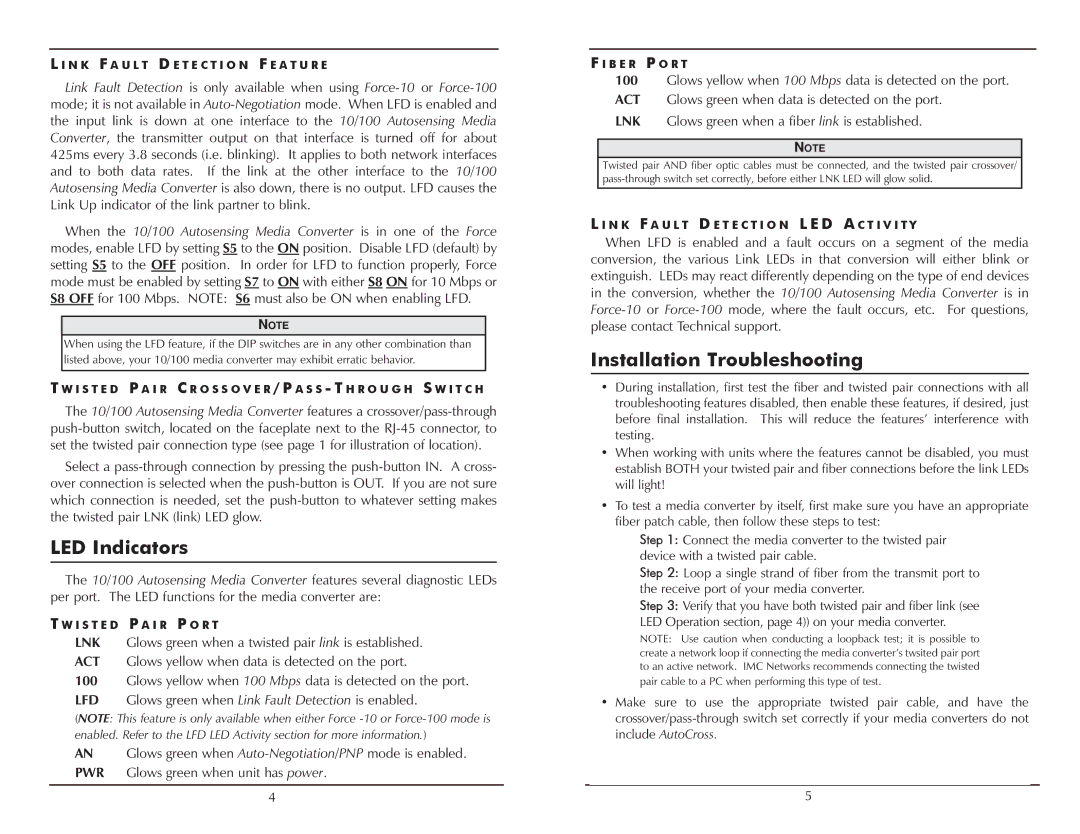10/100 Autosensing Media Converter, LMC7004A-R4, LMC7002A-R4, LMC7001A-R4, LMC7006A specifications
The Black Box LMC7003A-R4, LMC7004A-R4, LMC7001A-R4, and LMC7006A are advanced autosensing media converters designed to facilitate seamless data transmission across diverse networking environments. These converters enable the conversion between different media types such as fiber and copper, ensuring compatibility and reliable data transfer over varying distances.One of the standout features of these media converters is their autosensing capability. This technology allows the converters to automatically detect the speed of the connected device, whether it be 10 or 100 Mbps, and adjust the transmission speed accordingly. This flexibility supports legacy systems while accommodating modern network requirements, providing a streamlined solution for upgrade paths in network infrastructure.
The LMC7003A-R4 and LMC7004A-R4 models specifically support certain distances and types of fiber connections. The LMC7003A-R4 features multimode fiber capabilities, enabling high-speed data transmission over shorter distances, while the LMC7004A-R4 is geared toward long-distance transmission via single-mode fiber, significantly extending the reach of network connections.
For applications requiring more ports, the LMC7006A serves as a robust option with its multiple Ethernet ports, making it ideal for small to medium-sized enterprises that need to expand network access without compromising on performance. Each device is designed to be plug-and-play, allowing for simple installation without the need for extensive technical expertise.
These media converters are built with durability and reliability in mind, often featuring rugged enclosures suitable for various environments, including data centers, industrial settings, and other challenging locations. The LMC7001A-R4 boasts enhanced temperature tolerances, ensuring consistent performance even in adverse conditions.
In terms of power, the Black Box media converters often come equipped with options for PoE (Power over Ethernet), enabling them to power connected devices such as IP cameras and wireless access points without requiring additional power sources. This feature not only simplifies installations but also increases flexibility in network design.
Overall, the Black Box LMC series of autosensing media converters provide essential solutions for ensuring effective communication over varied networking landscapes. With their user-friendly operation, advanced technological features, and robust performance capabilities, they serve as vital components in modern network deployments.

